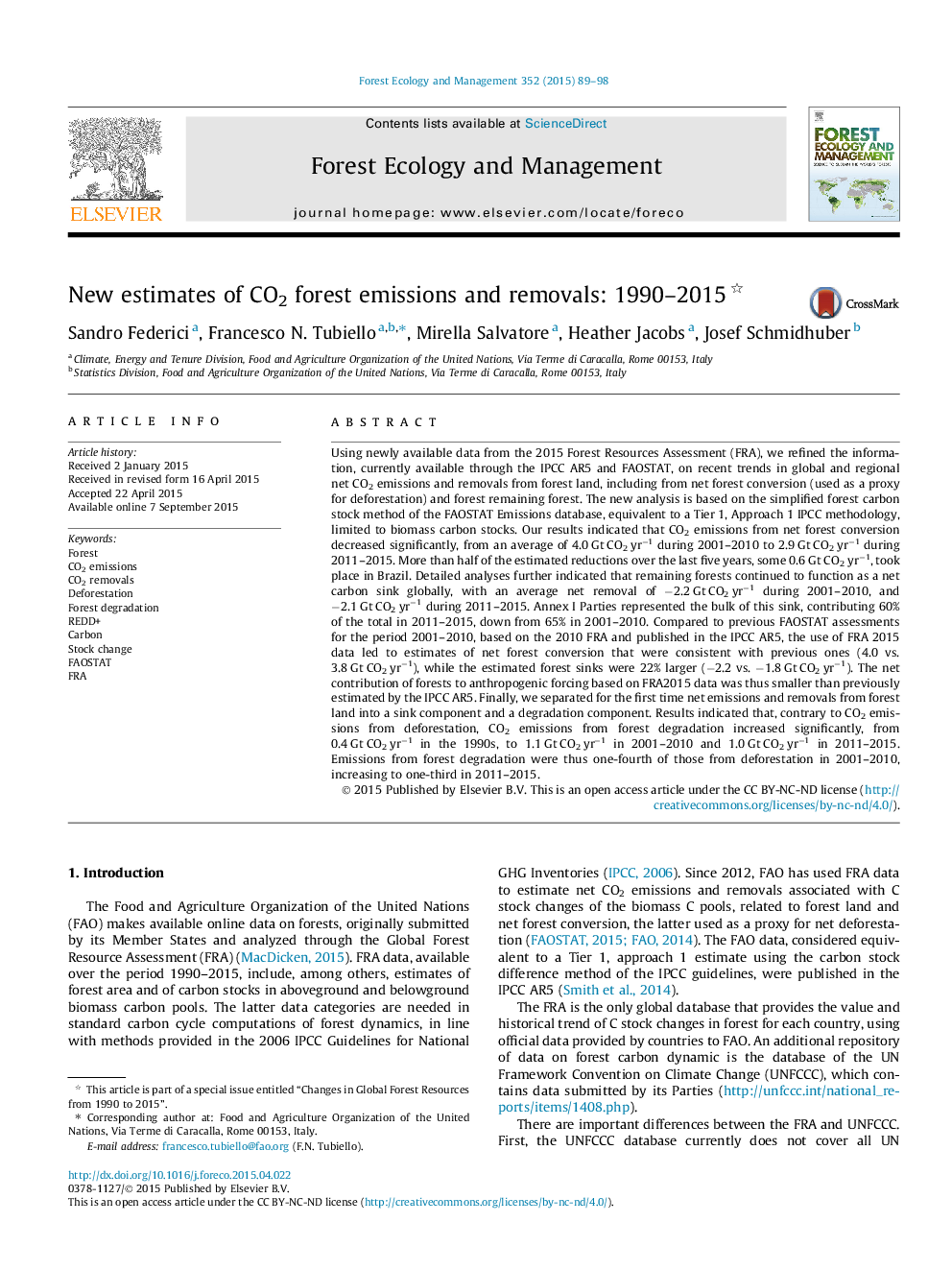| کد مقاله | کد نشریه | سال انتشار | مقاله انگلیسی | نسخه تمام متن |
|---|---|---|---|---|
| 86115 | 159166 | 2015 | 10 صفحه PDF | دانلود رایگان |

• We update global GHG forest emissions, including from deforestation and degradation.
• Deforestation decreased from 4.0 to 2.9 Gt CO2 yr−1 from 1991–2000 to 2011–2015.
• Degradation increased from 0.4 to 1.0 Gt CO2 yr−1 from 1991–2000 to 2011–2015.
• Remaining forests acted as an overall sink of −2.1 Gt CO2 yr−1 over the same period.
• The net effect on the atmosphere was net emissions of 0.8 Gt CO2 yr−1 in 2011–2015.
Using newly available data from the 2015 Forest Resources Assessment (FRA), we refined the information, currently available through the IPCC AR5 and FAOSTAT, on recent trends in global and regional net CO2 emissions and removals from forest land, including from net forest conversion (used as a proxy for deforestation) and forest remaining forest. The new analysis is based on the simplified forest carbon stock method of the FAOSTAT Emissions database, equivalent to a Tier 1, Approach 1 IPCC methodology, limited to biomass carbon stocks. Our results indicated that CO2 emissions from net forest conversion decreased significantly, from an average of 4.0 Gt CO2 yr−1 during 2001–2010 to 2.9 Gt CO2 yr−1 during 2011–2015. More than half of the estimated reductions over the last five years, some 0.6 Gt CO2 yr−1, took place in Brazil. Detailed analyses further indicated that remaining forests continued to function as a net carbon sink globally, with an average net removal of −2.2 Gt CO2 yr−1 during 2001–2010, and −2.1 Gt CO2 yr−1 during 2011–2015. Annex I Parties represented the bulk of this sink, contributing 60% of the total in 2011–2015, down from 65% in 2001–2010. Compared to previous FAOSTAT assessments for the period 2001–2010, based on the 2010 FRA and published in the IPCC AR5, the use of FRA 2015 data led to estimates of net forest conversion that were consistent with previous ones (4.0 vs. 3.8 Gt CO2 yr−1), while the estimated forest sinks were 22% larger (−2.2 vs. −1.8 Gt CO2 yr−1). The net contribution of forests to anthropogenic forcing based on FRA2015 data was thus smaller than previously estimated by the IPCC AR5. Finally, we separated for the first time net emissions and removals from forest land into a sink component and a degradation component. Results indicated that, contrary to CO2 emissions from deforestation, CO2 emissions from forest degradation increased significantly, from 0.4 Gt CO2 yr−1 in the 1990s, to 1.1 Gt CO2 yr−1 in 2001–2010 and 1.0 Gt CO2 yr−1 in 2011–2015. Emissions from forest degradation were thus one-fourth of those from deforestation in 2001–2010, increasing to one-third in 2011–2015.
Journal: Forest Ecology and Management - Volume 352, 7 September 2015, Pages 89–98